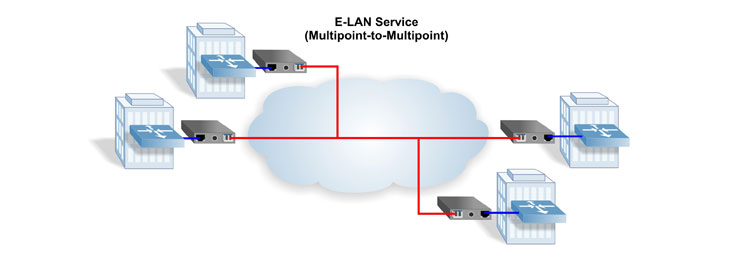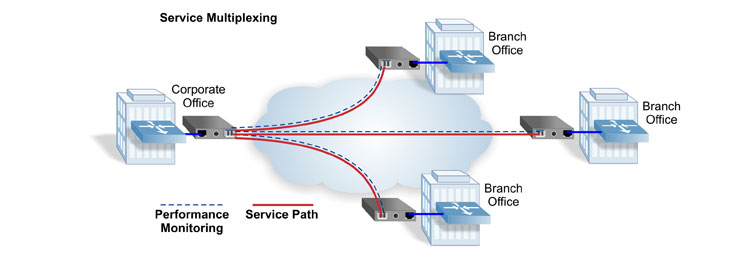The Original Carrier Ethernet Service Types
The EVC (in the figure below) is a point-to-point E-Line service, and can be used for either Ethernet Private Lines or Ethernet Virtual Private Lines. Ethernet Private Lines use dedicated UNIs for point-to-point connections, and contain a single EVC per UNI. Ethernet Private Lines are the most popular Ethernet service due to their simplicity.
Ethernet Virtual Private Lines (EVPL) are often used to replace Frame Relay or ATM services, by supporting a service-multiplexed UNI (multiple EVCs per UNI), and supporting multiple EVPLs from a single physical connection (UNI) at the customer premise.

E-LAN Services are comprised of multi-point to multi-point EVCs. An E-LAN can be used to create a Transparent LAN Service, such as a multi-point L2 VPN. Ethernet Virtual Private LAN (EVPL) are VLAN-aware with service multiplexing for applications that require multiple EVCs at each UNI.

Ethernet Virtual Private Lines
iConverter NIDs support service multiplexing for Ethernet Virtual Private Lines (EVPL) and Ethernet Private LANs (EVP-LAN), in which multiple services are aggregated on a single User-to-Network Interface (UNI). Each service is distinguished from the others by using 802.1q VLAN tag identification. All Carrier Ethernet service types support service multiplexing.

A single UNI, or port, can terminate multiple Ethernet Virtual Connections (EVCs), with each EVC connecting to different remote locations. In addition, a UNI with service multiplexing capability can identify different traffic received from the Customer Premise Equipment, and map different traffic to different EVCs, destined for different remote locations.










